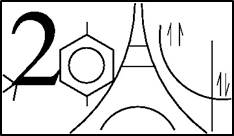Recent years have revealed that some enzymes retain their structure and functional activities in solvents other than their natural aqueous environment. This has lead to enhanced applications in the field of biocatalysis, since reactions that were suppressed in water can be explored. Lipases and proteases family of enzymes have been studied extensively in organic solvents. Proteases catalyze hydroxylation reactions in water however, transesterification reactions are observed in non-aqueous medium. Utilizing Subtilisin Carlsberg (SC), a prototypical serine protease enzyme, we study the role of the residual hydration shell in the transesterification reaction catalyzed by SC in organic solvents. Our goal is to elucidate why the enzymatic activity decreases when the hydration level is decreased. We use hexane as the organic solvent and altering the number of waters hydrating the protein we intend to study the effect of decreasing hydration on the catalytic activity in the first step of transesterification mechanism. This first step involves a concerted proton transfer from serine to histidine within the catalytic triad and a nucleophilic attack of the deprotonated serine to the ester group of the substrate, N-acetylphenylethyl ester, to form a tetrahedral intermediate. We employ a two valence bond (VB) state approach where the two VB states are the pre-reacting complex and tetrahedral intermediate, respectively. Utilizing the instantaneous energy gap between two VB states as the collective reaction coordinate and a mapping potential to drive the reaction, the free energy profile of the reaction is calculated. We study both equilibrium and dynamic effects on the catalytic rate constant. We disentangle the effects on the rate constant respectively coming from an equilibrium change in the free energy barrier height, for example due to different electrostatic stabilizations of the polar transition state by water, and from dynamical effects, due to the changing recrossing factors at different hydration levels.
|
|
|
Planning > Contributions par auteur > Fogarty AoifeRole of Hydration Shell in the Transesterification Reaction Catalyzed by Subtilisin Carlsberg in Hexane
1 : Processus d'Activation Sélective par Transfert d'Energie Uni-électronique ou Radiatif
(PASTEUR)
-
Site web
* : Auteur correspondant
Ecole Normale Supérieure de Paris - ENS Paris, Université Pierre et Marie Curie (UPMC) - Paris VI, CNRS : UMR8640
24 Rue Lhomond 75231 PARIS CEDEX 05 -
France
|
| Personnes connectées : 1 | Flux RSS |

|

 PDF version
PDF version